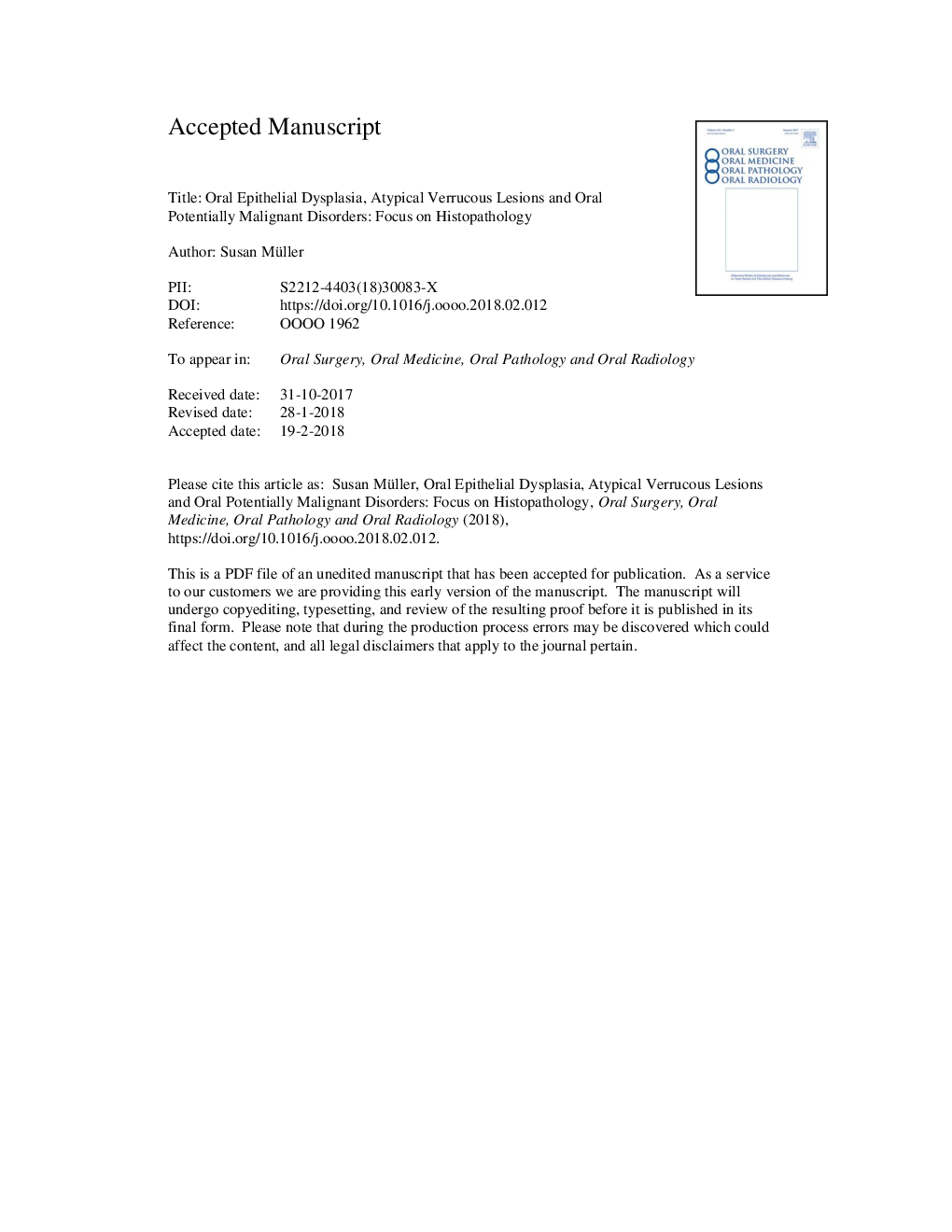| Article ID | Journal | Published Year | Pages | File Type |
|---|---|---|---|---|
| 8707629 | Oral Surgery, Oral Medicine, Oral Pathology and Oral Radiology | 2018 | 52 Pages |
Abstract
The term oral potentially malignant disorders (OPMDs) describes a recognizable group of mucosal diseases that have a risk of progressing to squamous cell carcinoma. Oral leukoplakia, the most common OPMD, has a 1% prevalence and reported malignant transformation rates of 2% to 5%. Other OPMDs include erythroplakia, erythroleukoplakia, submucous fibrosis, lesions of reverse smokers, and inherited genetic disorders, such as Fanconi anemia. The histopathologic assessment of OPMDs is an area of subjectivity, and oral epithelial dysplasia (OED) is fraught with both interrater variability and intrarater variability. Both architectural and cytologic changes are utilized when developing criteria for grading OED. However, the concept of atypical verrucous lesions, particularly as it pertains to proliferative verrucous leukoplakia, suffers from lack of histopathologic diagnostic criteria. Histopathologic mimics of OPMDs, including reactive/regenerative epithelium, frictional keratosis, and infection, can result in patient mismanagement. This review will focus specifically on the histologic features of OED, including human papillomavirus-associated dysplasia, as well as the histologic features of atypical verrucous keratoses/hyperplasia, particularly those that arise in the setting of proliferative verrucous leukoplakia along with OPMD mimics.
Related Topics
Health Sciences
Medicine and Dentistry
Dentistry, Oral Surgery and Medicine
Authors
Susan DMD, MS,
